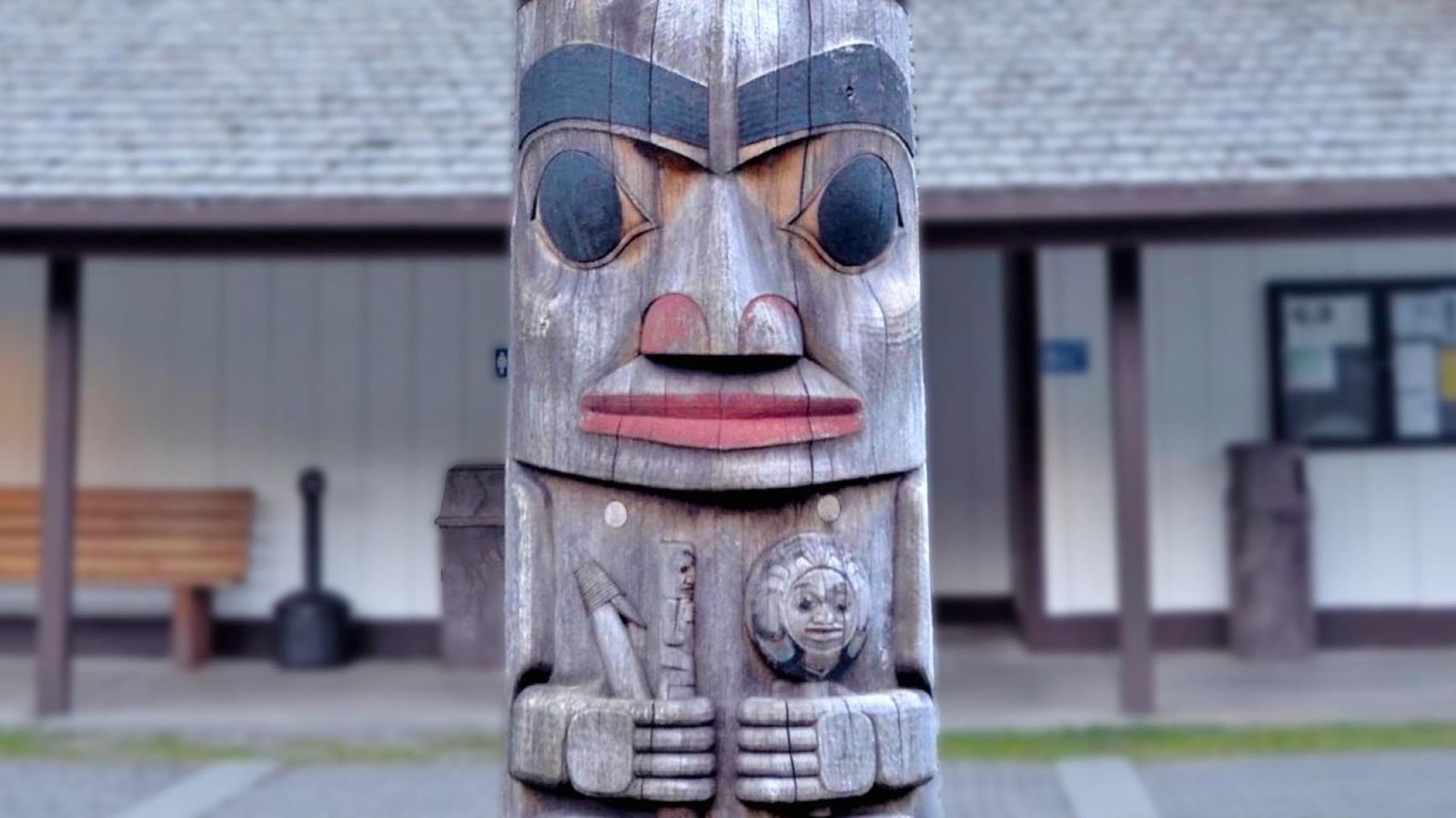Last updated: January 11, 2024
Place
Bicentennial Pole

NPS Photo
Accessible Sites, Historical/Interpretive Information/Exhibits
In 1976, as the Sitka National Historical Park marked the nation’s bicentennial, Sitka Tlingit and Park Superintendent Ellen Hope Lang, sponsored a totem design contest. Duane Pasco, a noted Pacific Northwest Coast Native artist, won the bid to carve a new pole with a design depicting the last 200 years of Pacific Coast Indian cultural history. A living history demonstration was arranged in the park when this 27’ pole was carved out of red cedar.
- The bottom figure depicts the Pacific Northwest Coast Native people before the arrival of Europeans, living close to nature--sharing a rich material culture and ceremonial life as represented by the halibut fishhook and dance rattle in his hands.
- The next segment of the pole shows Raven and Eagle, the two Tlingit moieties, holding a copper shield, a traditional symbol of wealth. The salmon symbolizes abundant food sources.
- The third figure signifies the arrival of Europeans, bringing with them firearms and Christianity. In his right hand is a rolled document, signifying a long line of treaties
- The top figure represents the Northwest Coast Indian of today, with a richly carved staff symbolizing the abundant cultural heritage of the past in his left hand, and the staff in his right hand is bare, signifying that the future remains to be seen.
